Welcome back (or for the first time) to Plain Great Stuff, a newsletter—or, let’s be real, blog—where I tell you about (mostly weird) things that I like.
First, here’s where I went swimming this past week.
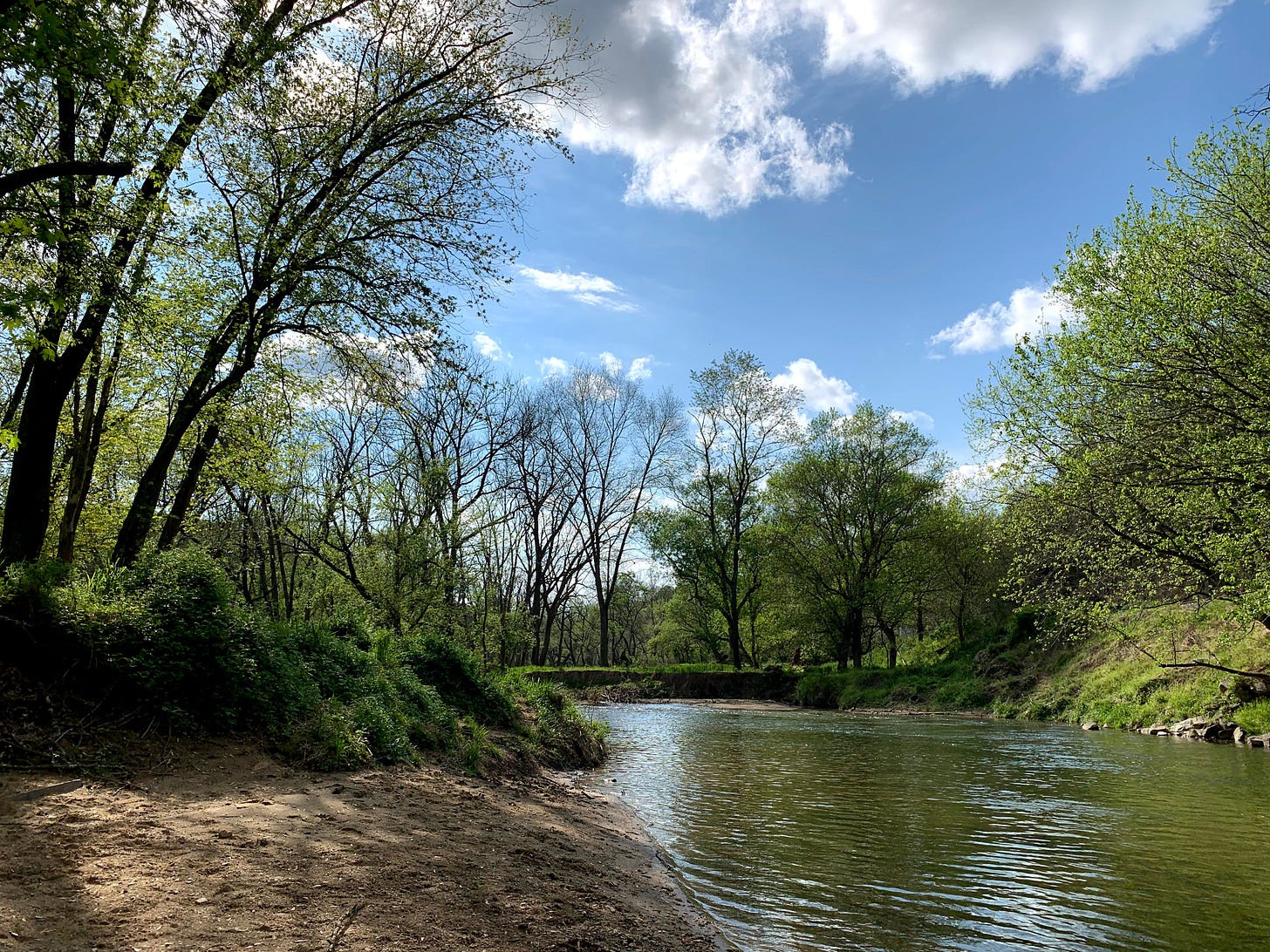
Today I’m blogging about blogging—it’s a meta-blog, blog-ception, I will stop now—but also talking about a book, near and dear to my heart, that probably subconsciously explains how I ended up being a tech reporter: Microserfs.
Microserfs, Douglas Coupland’s 1995 novel of pre-dotcom bubble tech world, isn’t *quite* a blog. But the shape is similar: a daily journal of the protagonist Dan—a coder who starts the novel as part of the Cult of Bill (Gates, obviously) at Microsoft.
It’s very specific pop culture time capsule that actually started life as a Wired short story) and builds layers of narrative out of the minutiae of daily life—fleshed out with proto-memes, like the Jeopardy-themed introduction to Dan and other characters:

I couldn’t tell you exactly when I encountered Microserfs, but I peg it at roughly a decade after its release, sometime while I was in high school. And it became a favorite—a book to be re-read periodically and displayed prominently across bookshelves in many apartments. At one point, I slipped a note declaring it my favorite novel into the copy at my university library.
Meanwhile, writing weird personal things on blogs was probably some of the earliest prose outputs. Later, I became a professional blogger at ThinkProgress (RIP) where we drew opinions and analysis from facts—then blogger-turned-reporter for a national tech billionaire-owned newspaper, where opinions became decidedly off the table. And they mostly stayed that way until year or two, while I continued to mostly identify as a journalist rather than, say, a person.
(Also meanwhile, MANY, MANY THINGS HAPPENED. And I had opinions. I don’t think anyone informed about current events, especially by reporting on them, can credibly claim they didn’t—or don’t. How can you learn about and engage with as series of facts—people, places, pasts—then explain it to others in a public forum without coming to conclusions?)
Now, I’m trying to compartmentalize my reporter identity because I, clearly, contain multitudes. But I still struggle to be loud with my opinions the way that I was in the before times. Some of this is the natural cautiousness of learning more about how harsh the world can be. But a fair amount of it comes from learning to cut all but the precise facts out of a narrative through writing thousands of news stories.
And the truth is, I miss the flourishes—the opportunity to rant on extemporaneously and add flavor by keeping in the fat.
Over the past year, I built new compartments: MidMountain for my feminist folk music croonings; Room For More to channel the anguish over reporting on immigration injustice into community action; an artist practice to move ideas in my head into forms I can share with others.
This blog, er *newsletter*, format feels like another way to re-open the door to shouting things aloud with words—starting with the thing that feels the most useful right now: putting out good feelings into the pandemic abyss.
So, back to Microserfs.
I’m not going to spoil much because I’m earnestly trying to get you to add it to your social distancing reading list—if it’s not already part of your personal canon. The novel is both a delightful look into 90’s tech culture before everything became quite so sinister and a coming of age narrative about building a modern community.
It bursts with sincerity, while also featuring a chapter translated through a “Prince Emulator.”

But, perhaps most relevant to our meta-blogging today, Microserfs explores how work shapes identity in modern times.
The Coupland of my mind—no doubt due to Microserf’s spot in it—is still enshrined as a writer. (Perhaps most vividely, the fictional version of himself he wrote into the book’s spiritual successor JPod.)
But, of course, he also contains multitudes: Coupland is an actively exhibiting (and much lauded) artist—in fact, a formally trained one who worked as a designer before becoming one of the defining writers of our time. (I encourage you to check out his recent exhibition “Fordite: Neominerology in the Anthropocene” which explores the human ecology and beauty of industrial residue!)
By the time I first read Microserfs, he was already ramping up his artistic production again—and his life seems all the more full for it.
“I’ve certainly been a much happier person,” he told the Toronto Star in 2015. “I started thinking about myself more as an artist who works with photography, or wood, or even books. And it occurred to me, finally, that maybe I’d been framing it wrong all these years.”
You can see the artistry in his novels, where interesting design builds texture and tone in a way that words alone often couldn’t. See, for example, some snippets of JPod below with a cameo from my feline companion, Fax Machine.

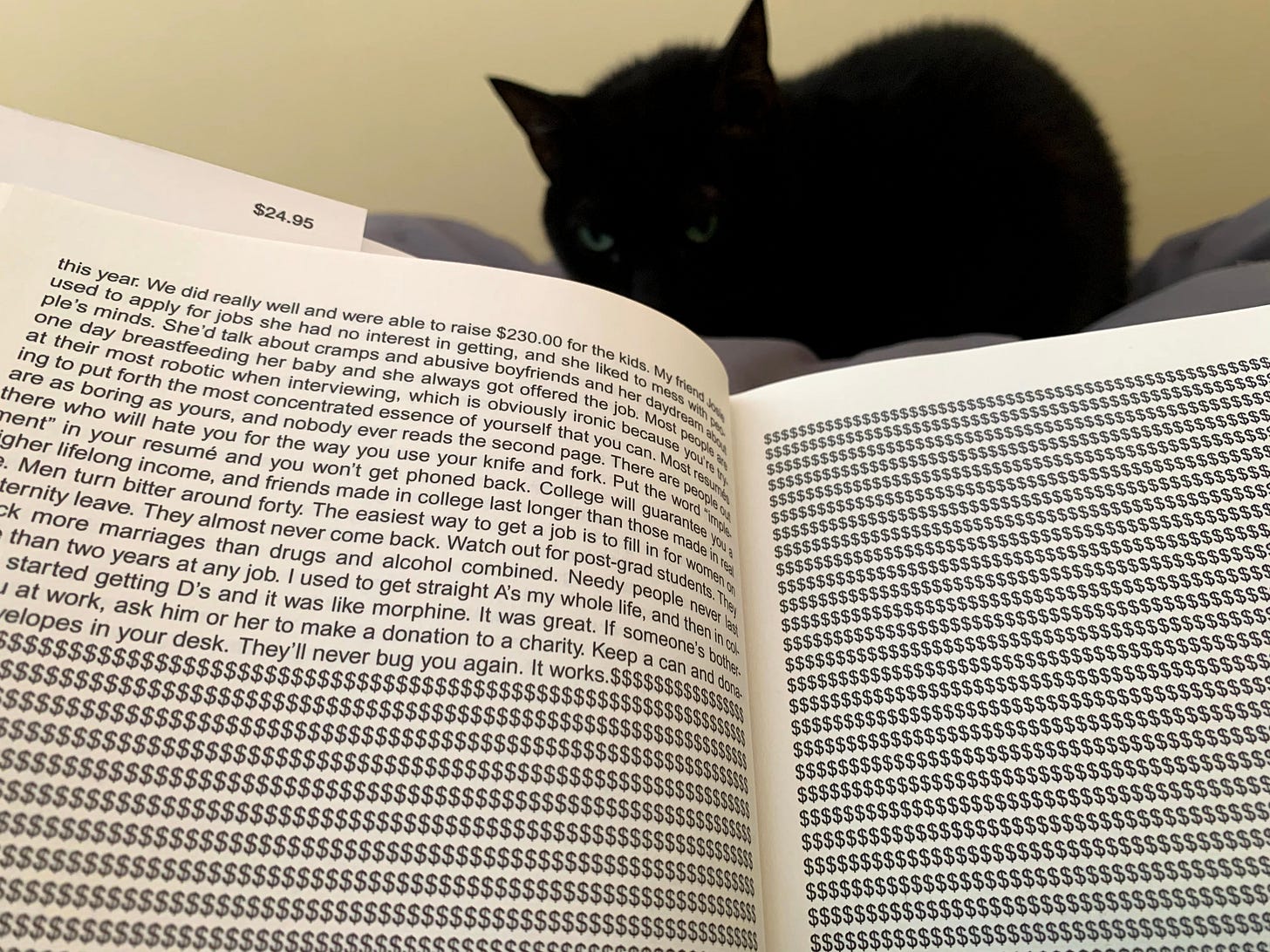
JPod, is overall, less blog-like and more experimental than Microserfs. But both, I know are part of the reason why I’ve spent so much time blogging in the past—and why I’m still excited to do it now.
The blog section on Coupland’s website is currently “Coming soon.”
ART TIME!
In the spirit of Coupland’s artistic endeavors, I’m sharing a few pieces from my artistic archives—starting with my eternal muse, abolitionist revolutionary, John Brown.
I’ve made so many Browns over the past two years in various forms, but one of my visual favorites is a penny mosaic portrait I made of him based off of the Ole Peter Hansen Balling from the National Portrait Gallery which now lives in my living room…
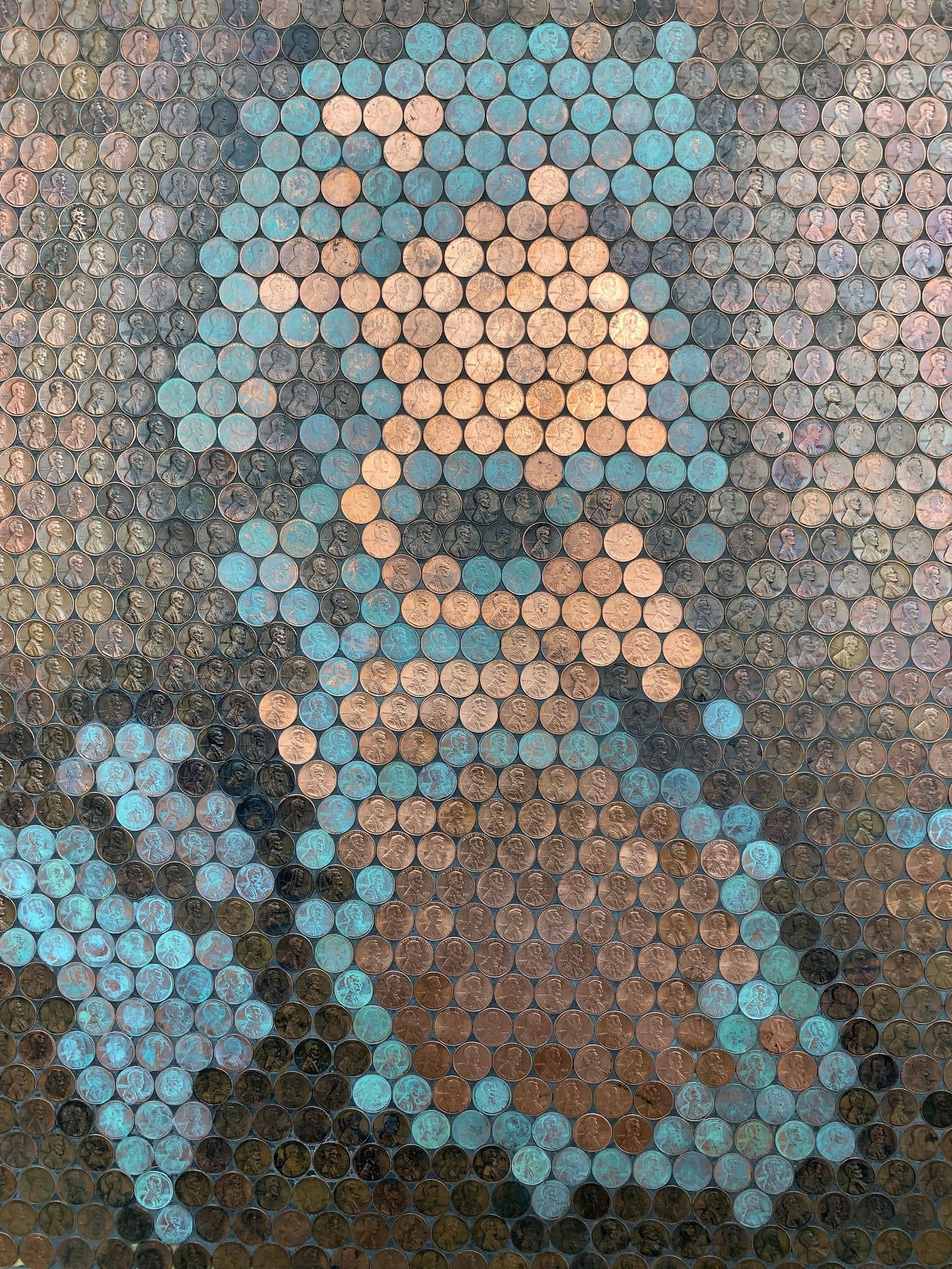
Excited to be working on an even larger scale penny portrait of Brown (this time, based on John Steuart Curry Tragic Prelude!) for a private commission now and to have already shared another of my favorites—John Brown’s Mossy Beard—with my excruciatingy talented and beautiful friend Abby, who you sometimes can hear on Invisibilia and see, below!

I also remain enamored of this Anita Hill portrait I painted in 2018, which seems all the more relevant now than ever.

Also excited by a sculptural series I’m working on that combines DIY methods, living micro-terrariums, and mirrored perspectives that reflects on desire for intimacy with nature in consumerist world.

And we’re going to end this one pet portraits of my parent’s two mini-Tiger Kings.
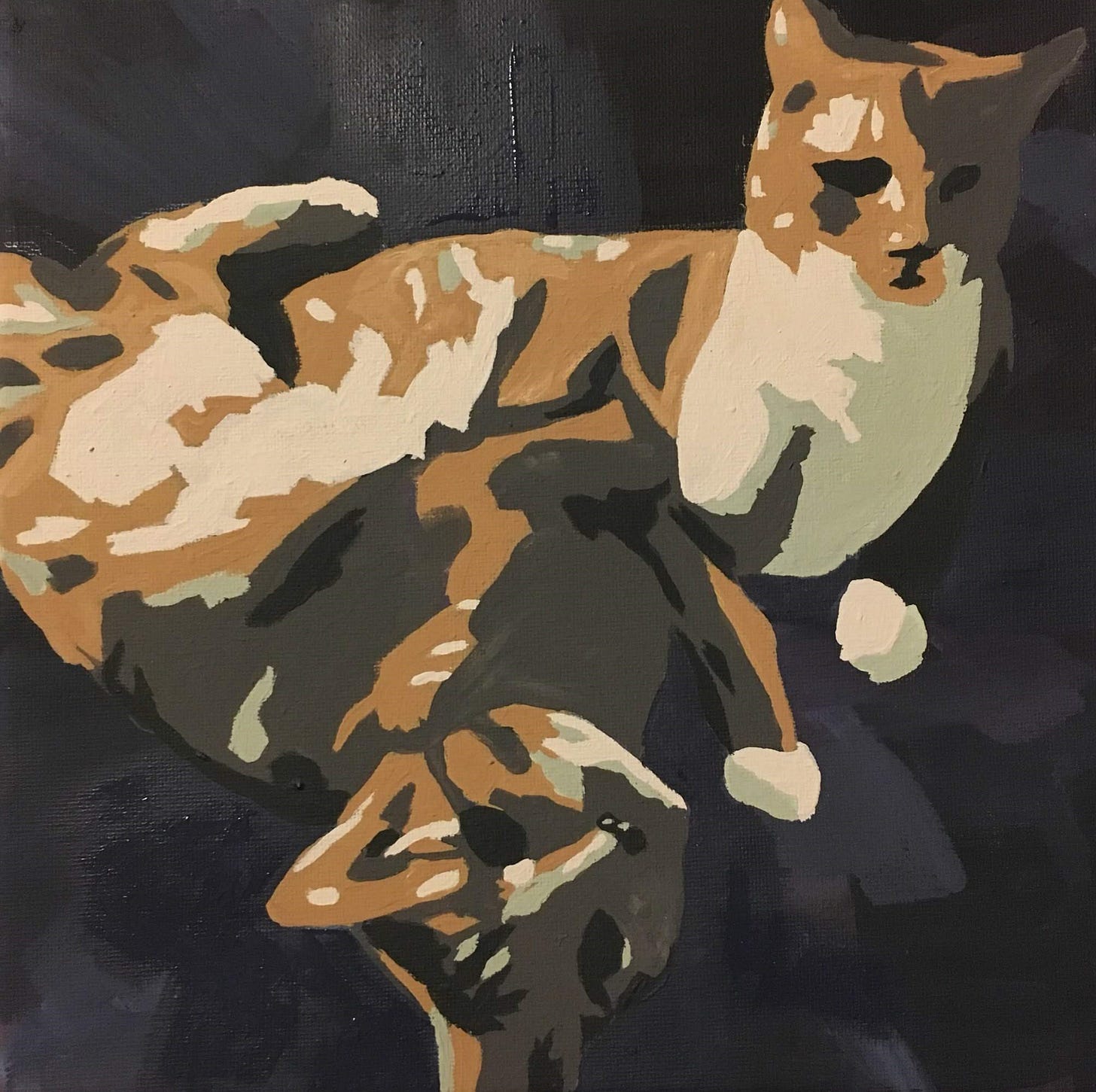
What else is great?
On today’s topic?
Obviously read Microserfs then JPod as well as every other Coupland book! (Also try to track down the JPod television adaptation, but it’s hard to find!)
Read up about Douglas Coupland’s art career in Murray Whyte’s 2015 coverage in the Toronto Star and check out his Fordite exhibition on Artsy!
Otherwise, our cursed Monkey’s Paw recommendation this week is Future Histories by Lizzie O’Shea! This thoughtful look at what the past can teach us about our collective future isn’t quite as on the nose as previous suggestions, but I had a chance to host a talk Lizzie at Solid State Books back in February and I think her optimistic vision for the future is needed now more than ever—plus, here’s a picture of Rolodex with the book!

Pets, Plants, and Partings
Both of my furrboys remain great and made cameos in the newsletter already! But the garden is still going strong—upfront with irises:

And back garden, where we theoretically grow food, is finally kicking—with our somewhat late pea-plants making their debut and our blackberry bush is ready for business!
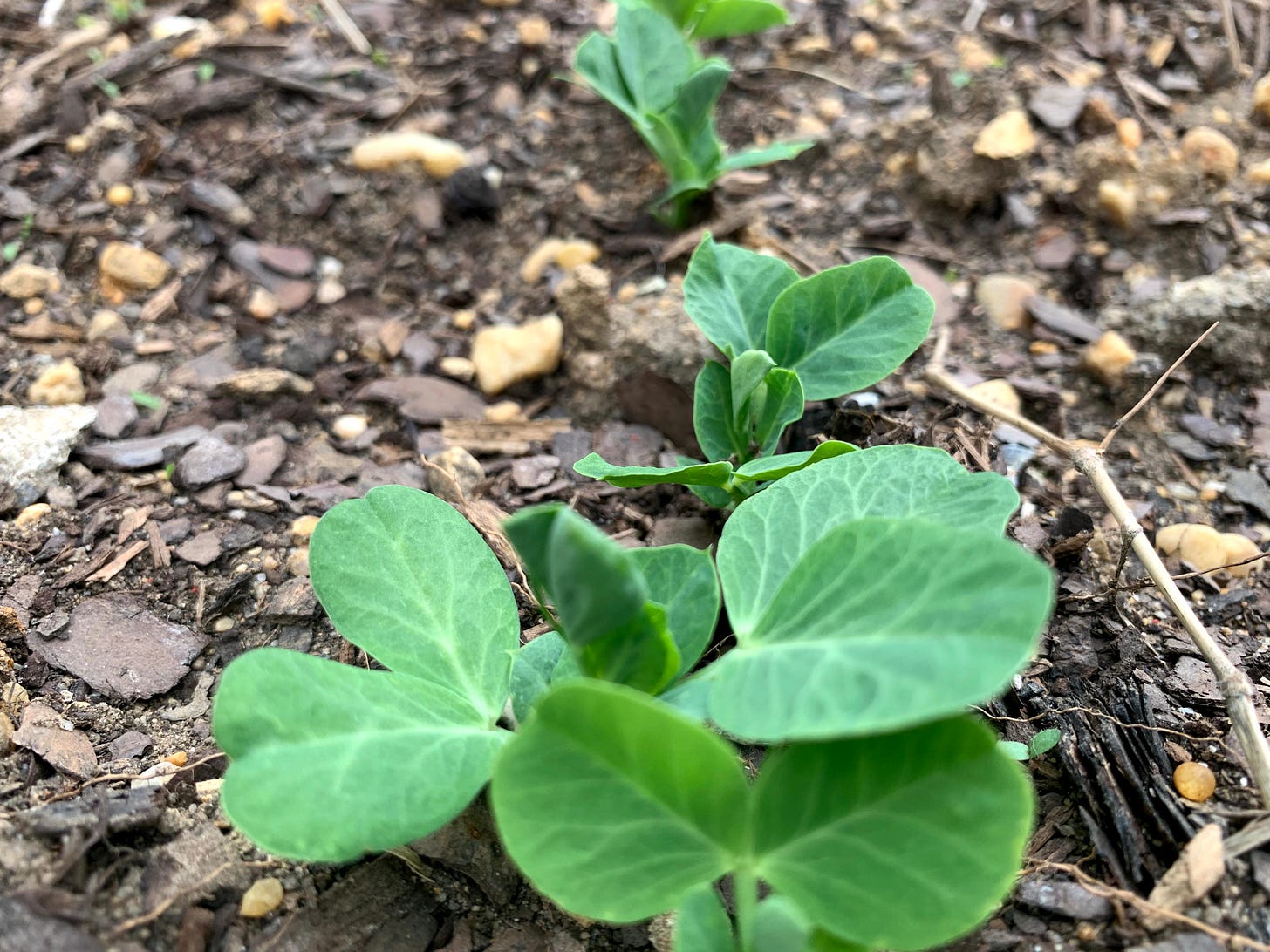

Want other great people to get this same sort of magic in their inboxes every Friday? Forward this along to a friend! (Oh no, did I just become a chain email? Hurry, share this with twenty people or your sourdough starter will expand beyond its jar then consume your entire family!)
Oh, and one last thing: Sorry, for things running a little later than normal with the newsletter this week—I think my goal is to get them out by noon on Fridays? But I ran into some technical difficulties: if this last section of the newsletter reads a bit zanier than the top, it’s because my period key stopped working while I was editing the final copy together! So I decided to run with extra enthusiastic (and at times mysterious?) punctuation!

Special thanks to my husband Matt for making lunch while I wrapped this up and bringing it to me in bed—which yes, is where I mostly write—then not giving me too much grief while I let it go cold trying to figure out this whole keyboard sitch!


